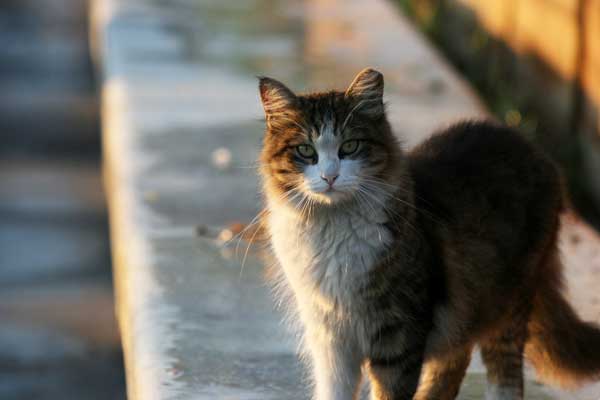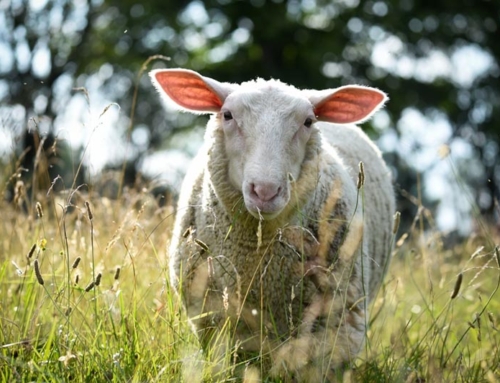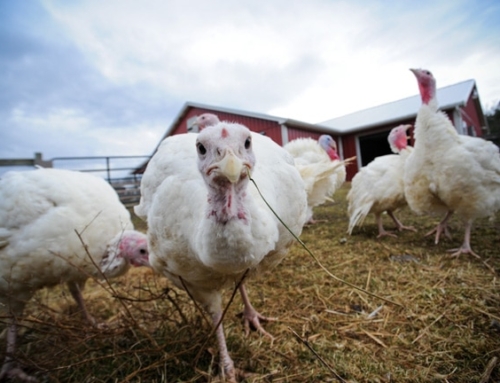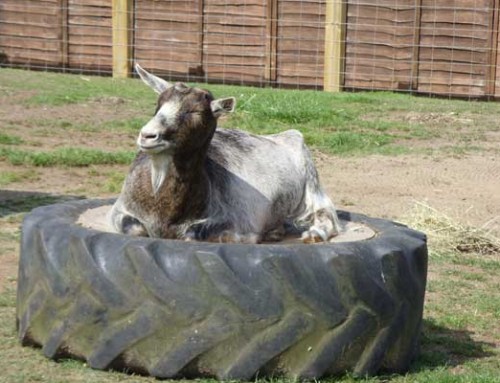Mange, One Feral Cat Among Millions
Disclosure: This post may contain affiliate links
Feral cats account for millions of the animals that need our help. Mange's story is just one of many, but it's important that we tell it.

What's in this post
By Daria Zeoli, Guest Contributor
I’ve written before about the stray and feral cat colonies near where I work. In the past year, a new family of cats has been born. The kittens are adorable, but it’s unfair that they were born into this situation. Their mother was dumped outside and left to fend for herself. Fortunately, my friend connected with someone who has been helping to trap some of the cats to fix as part of a local Trap Neuter Release program. While new cats fending for themselves is not ideal, new cats who can have more cats as an alternative is much worse.
Some old-timers live outside – they’ve been there for years. Some of them will come up to you, and rub against your legs. Some are more skittish, and will watch carefully, waiting for food to be left but not coming too close. Trust has to be earned; the hands that feed are the ones that are trusted. For the record, I am not a feeder, and I do not get the leg rubs and trust. I am okay with this role – I am the observer as I let my friend do her thing. She is very good at it, and I must remember to support the work she does a bit more this year. As you may have already deduced, caring for tens of cats is not inexpensive.
Mange is a gray cat who has been outside for longer than I can remember. She has had litters of kittens of her own; a former co-worker adopted one of her babies before he was too feral, and as far as I know, he is still living his happily-ever-after. Mama Mange, on the other hand, is rightly suspicious of humans. I’ve called her a tough old broad year after year – she doesn’t like to hang out with the other cats, and in fact we see her emerge and retreat from a hole into and out of the building she has called home for (as best we can remember) over a decade.
When you see someone every day on your daily walk at lunch, you become attached in some way. I greet the cats as I walk by: “Hi, Red. How are you, Bert? You’ll get your lunch a little later, Fluffs.” I started to call Mange “Pudge” a few years ago, as her stomach started to look flabby. I meant it as a term of endearment – at least as much as a feral, independent cat can endear herself to someone.
Mange is old now – much older, I think, than most feral cats. She has weathered cold winters and has been resourceful enough to survive even as the other cats eat up all the food left out for them. Old age is now showing on her face – her eyes have gone the milky white that comes from cataracts. I can’t explain what it felt like to watch her cry a few weeks ago as we tried to coax her towards the food being laid out for her, only to watch helplessly as she wandered further away.
And then, one day last week, how it felt a thousand times worse to watch her wander towards the building she’s called home for so many years, how she bumped into my friend as she was laying down the food, how she quickly moved away, and walked right into a pole. It’s now become apparent that Mange is also, perhaps, deaf. She seemed to have no sense of anyone or anything being in her way. Even seeing this, we still tried to coax her, tried to soothingly tell her she had nothing to fear. Of course, we weren’t being completely honest with her, or with ourselves.
No domestic animal should have to live under a building for over a decade. No domestic animal should bear cold winters and hot summers without protection. No domestic animal should have to waste away in her last years to a skinny, dirty, blind and deaf version of the animal she might have been, if she’d been given the chance. I don’t presume to understand what it’s like to be a cat, and so I also don’t presume to understand what it’s like to be a cat who can’t see or hear. But I can only imagine that it’s scary to be in a dark, quiet place like that. I am now terrified that she will be attacked by a predator or run over by a car.
I asked my friend if it would perhaps be more humane to try to catch Mange, and to have her put down. If she were a house cat, would that be the choice to be made? It’s hard to say. Being blind and deaf but otherwise healthy and safe in a home where you are fed regularly and sheltered always is a very different life than the one Mange leads. And, for that matter, had Mange been dealt the hand where she had a home, would she have gone blind in the first place? Living in the dark underbelly of a building must have had some effect on her eyesight.
According to the ASPCA, “almost half of the kittens born outdoors die from disease, exposure or parasites before their first year.” Furthermore, “if a feral cat survives kittenhood, his average lifespan is less than two years if living on his own.” It is thanks to my friend and others like her that so many cats have lived much longer than two years, and closer to the ten that the ASPCA says is possible in a caretaker situation. Sadly, it’s estimated that there are tens of millions of feral cats in the United States alone.
Please don’t perpetuate Mange’s story for countless other cats. Make her fate an exception to the rule. Here are a few ways you can get started:
- Please don’t buy your next pet from a breeder, or from a pet store. Please, please consider a rescue or a shelter.
- Have your pet spayed or neutered and, if you can, support the organizations that help with Trap Neuter Release programs in your area.
- Visit Alley Cat Allies for information on what to do if you’ve found a stray or feral cat, and for help on how to get involved.
- Share your stories, and the stories of the animals you care for. This is a crucial piece of the puzzle when it comes to getting people to relate to the plight of animals.
Photo: Quinn Dombrowski
Want to help animals?
From volunteering your time to sharing vegan content on your Facebook page, there are lots of ways to get involved to help the animals- and some of them won’t cost you a dime. Visit the How to Help Animals Guide guide to learn more.





